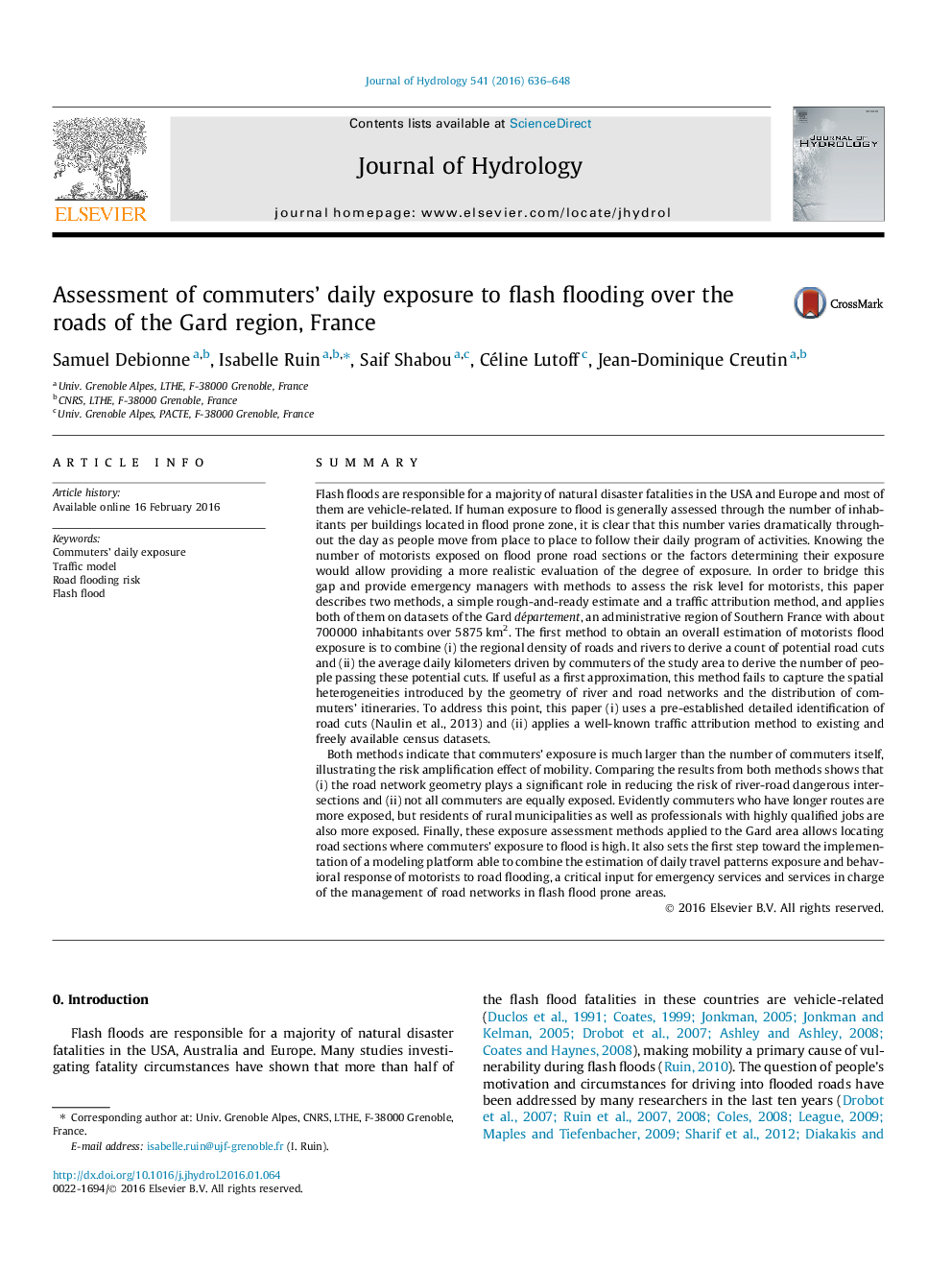| کد مقاله | کد نشریه | سال انتشار | مقاله انگلیسی | نسخه تمام متن |
|---|---|---|---|---|
| 6409399 | 1332869 | 2016 | 13 صفحه PDF | دانلود رایگان |
- Compares methodology to provide realistic estimations of dynamic human exposure to flash flood hazard.
- Illustrates the risk amplification effect of daily mobility.
- Highlights specific geographic locations and social profiles particularly exposed to flash flood risk in the Gard region.
SummaryFlash floods are responsible for a majority of natural disaster fatalities in the USA and Europe and most of them are vehicle-related. If human exposure to flood is generally assessed through the number of inhabitants per buildings located in flood prone zone, it is clear that this number varies dramatically throughout the day as people move from place to place to follow their daily program of activities. Knowing the number of motorists exposed on flood prone road sections or the factors determining their exposure would allow providing a more realistic evaluation of the degree of exposure. In order to bridge this gap and provide emergency managers with methods to assess the risk level for motorists, this paper describes two methods, a simple rough-and-ready estimate and a traffic attribution method, and applies both of them on datasets of the Gard département, an administrative region of Southern France with about 700Â 000 inhabitants over 5875Â km2. The first method to obtain an overall estimation of motorists flood exposure is to combine (i) the regional density of roads and rivers to derive a count of potential road cuts and (ii) the average daily kilometers driven by commuters of the study area to derive the number of people passing these potential cuts. If useful as a first approximation, this method fails to capture the spatial heterogeneities introduced by the geometry of river and road networks and the distribution of commuters' itineraries. To address this point, this paper (i) uses a pre-established detailed identification of road cuts (Naulin et al., 2013) and (ii) applies a well-known traffic attribution method to existing and freely available census datasets.Both methods indicate that commuters' exposure is much larger than the number of commuters itself, illustrating the risk amplification effect of mobility. Comparing the results from both methods shows that (i) the road network geometry plays a significant role in reducing the risk of river-road dangerous intersections and (ii) not all commuters are equally exposed. Evidently commuters who have longer routes are more exposed, but residents of rural municipalities as well as professionals with highly qualified jobs are also more exposed. Finally, these exposure assessment methods applied to the Gard area allows locating road sections where commuters' exposure to flood is high. It also sets the first step toward the implementation of a modeling platform able to combine the estimation of daily travel patterns exposure and behavioral response of motorists to road flooding, a critical input for emergency services and services in charge of the management of road networks in flash flood prone areas.
Journal: Journal of Hydrology - Volume 541, Part A, October 2016, Pages 636-648
